We helped our customers save $11,266.70 last month.
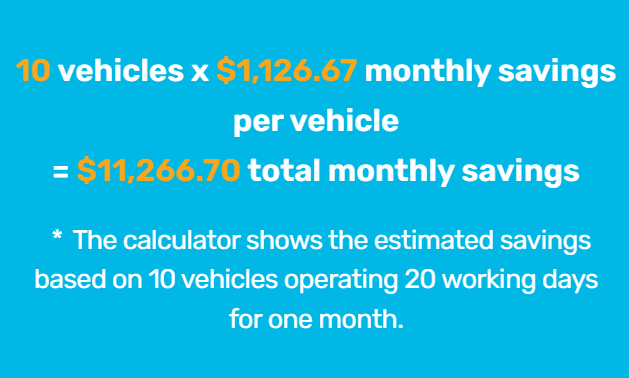
(While generating more orders by improving their delivery experience.)
Their secret?
Route optimization software.
And a new way of collecting Proof of Delivery (POD).
And in this article, we’re going to reveal exactly how you too can do it with eLogii, step-by-step.

The Big Problem with Collecting PODs Manually: Scale
Collecting proof of delivery is important for delivery operations.
(When done right.)
But there’s one big problem how most companies collect PODs:
They don’t scale.
And if you’re in a competitive market, you NEED to collect PODs at scale.
For example, let’s say you deliver 100 orders per month.
According to our smallest clients, you can do that manually.
That sounds great. But that’s around three deliveries per day.
And until you have to deliver 10,000 deliveries per month, like our biggest clients.
That means you’d have to collect PODs for 330+ deliveries each day.
(Plus, this assumes that you’re not going to have to collect more PODs when meeting peak seasonal demand. Which you’ll have to!)
So when our clients did the math, they found it impossible to collect PODs by hand. Using pen and paper.
And they had to find another approach.
One that could scale. Big time.
So they contacted us. And we had a solution.
It’s called eLogii.
Our delivery management software.
And here’s how it works (when it comes to collecting PODs):
How eLogii Flips the Script on Traditional Proof of Delivery
eLogii completely flips the script on how you collect proof of delivery.
Instead of using pen and paper and adding it to spreadsheets by hand, eLogii enables you to do it digitally.
Or collect electronic proof of delivery (ePODs).
Specifically, your drivers use mobile devices to collect PODs from customers at their doorstep using an app on their phone.
Which dispatchers and delivery managers can see and review at their desks on their screens.
Let’s look at an example.
Let’s say that yesterday, John Smith ordered a pair of sneakers from you.
That purchase would generate an order on your OMS and create a task on eLogii:

Or you can upload it in bulk via .CMS file:
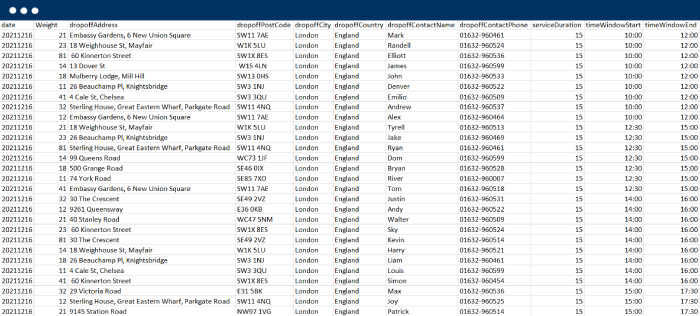
You’d place it into your schedule for the day:
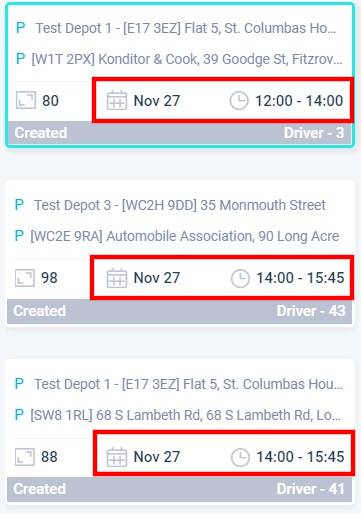
Plan a route for the driver:
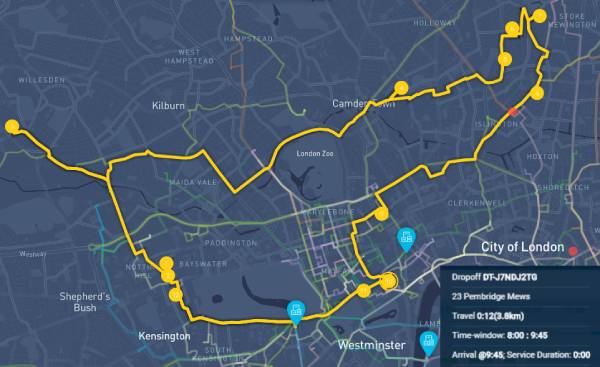
And the system would dispatch it to the driver’s phone:

Sure enough, the driver would reach the customer’s doorstep and deliver the order.
And traditionally, he’d have a document for the customer. Which the customer would have to sign.
Or take a picture and send it to the dispatcher.
Or use some other way to confirm the parcel has been delivered.
But that’s not really the point. That’s not really fast. And that’s NOT the case with eLogii.
Instead, to confirm the order has been delivered the driver HAS TO collect the POD.
And you get to choose how he does it:

It can be via:
- Electronic signature
- Barcode or QR code
- Image
- Customer’s comment
- Notes and formes
And he can collect all of this via the eLogii Driver App.
And each time he collects the necessary PODs, he confirms the delivery.
While the Driver App updates that information to the system.
So the driver can move onto his next task.
While the dispatcher or manager can see and review the POD on the dashboard.
That’s exactly how our customers do it.
With that, let’s jump into the step-by-step process.
Step #1: Set Up the Proof of Delivery
Your first step is to set up the proof of delivery.

(After you’ve subscribed to a software solution.)
BOOK A DEMO to see how eLogii works based on real-world examples from your company.
Setting up PODs controls the actions your drivers will need to take in the driver app to confirm a successful drop-off.
These actions can be required or optional:
It’s also possible to add specific POD actions for individual items in an order:
And you can add cash on delivery PODs as part of the workflow:
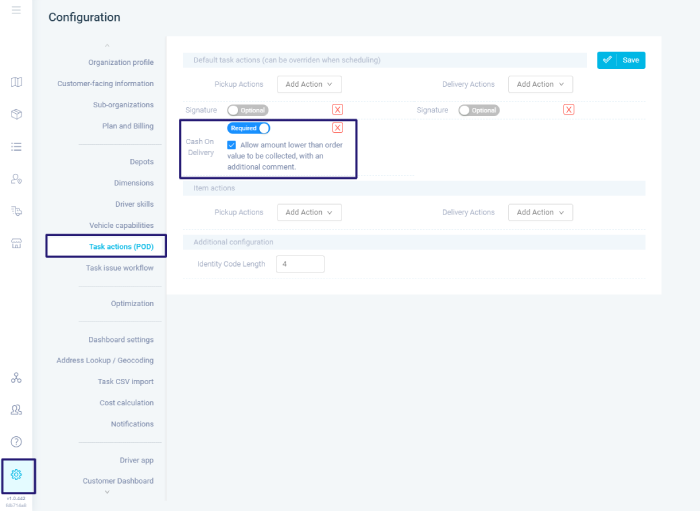
With the option to allow the driver to collect amounts lower than the order value.
(Provided he leaves a comment why that happened.)
Once that’s done and you hit Save the setup is complete.
Now drivers can collect PODs on their route.

Step #2: Collecting Proof of Delivery
To collect PODs, drivers need to install the Driver App on their phones.
The app is available for iOS and Android devices.
Once installed, the driver has access to their tasks:

A map with his route, drop offs, navigation, and current location:

And information about each order and customer:
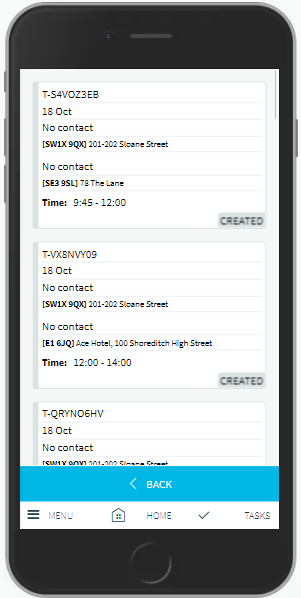
When the driver reaches the customer’s doorstep, they confirm the order by collecting the POD.
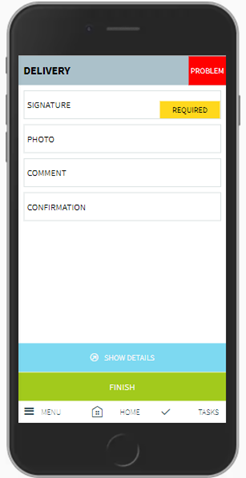
For example, here’s a POD with an e-signature:

If the POD is selected as optional, the driver DOESN’T HAVE TO collect it to complete the drop off.
If the POD is selected as required, the driver HAS TO collect it to mark the delivery as complete.
Otherwise he can’t move onto the next task.
And dispatch will see the delivery as incomplete on the dashboard:
After the driver completes his route, you can move on to the next step.
Step #3: Reviewing collected PODs
Dispatchers and delivery managers can review all PODs that drivers collect.
You can do this for individual deliveries by selecting a specific task from the list.
And downloading the POD as a PDF file.
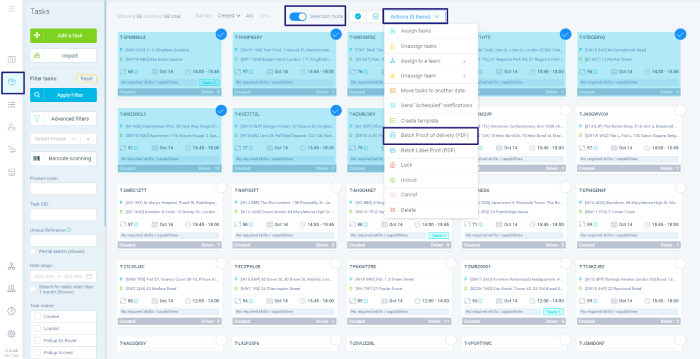
You can also select a number of tasks and review them as Batch PODs:
The software will automatically create a link that you can click and download with a ZIP folder that contains all the PODs in a PDF format.
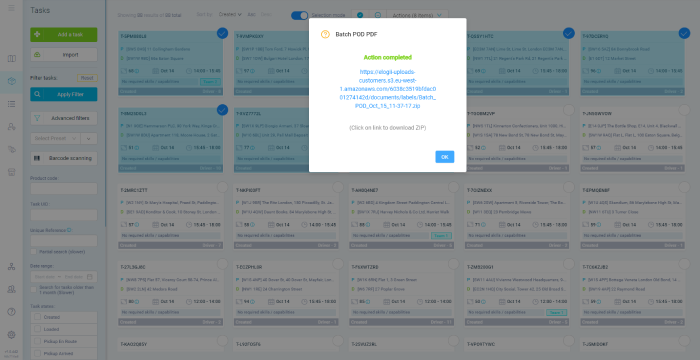
How Digital PODs Save You Money Like Crazy?
To be clear:
PODs alone don’t save you all this money.
Digital PODs are part of the delivery automation process that reduces waste and optimizes your entire operation with the use of software, like eLogii.
That said:
Collecting and reviewing proof of delivery this way does save you money in its own right.
Here’s how:
#1 ePODs are paperless
How many documents do you have to print out for your drivers?
If you collect proof of delivery, you have to do it for each order.
Right?
That wastes your time, money, and other resources.
Paper documents can get damaged.
And storing them also takes up a lot of space.
Which costs you money, too.
Route optimization software doesn’t require paper.
Every POD that your drivers collect is electronic.
It won’t get damaged.
It’s a document that you can store on the cloud.
Or offline on any of your devices.
And it comes as part of any plan that you subscribe to.
(At least when it comes to eLogii.)
#2 It’s faster to collect them
How long does it take to print and prepare each traditional POD?
To organize and hand them out to each driver?
Not to mention, how long does it take your drivers and customers to fill each one out?
If you ask our customers, that’s a waste of time.
And ultimately money.
With ePODs, each POD is tied to a specific order.
After it’s set up, your delivery planners don’t have to move a finger.
And all drivers have to do is take out their phones and collect the POD that you need.
While customers can give out all the information on the spot in seconds.
So neither they nor your drivers waste any time.
And just like that, you’ve reduced the service time for each delivery.
Which means there’s room to handle more orders every single day.
#3 Your raise transparency
Without ePODs, it’s difficult to be transparent.
Both in-house:
How do you know whether a driver has actually delivered a package?
Or whether they failed their first delivery attempt and used more fuel than necessary?
And with your customers:
How do you know whether your drivers are telling the truth?
Or your customers when they say that their order hasn’t been delivered?
Reviewing ePODs and making them a requirement to complete a drop off protects your company.
It also makes it more transparent. Which makes your customers happier.
Because you can prove any claim immediately with hard evidence.
And that’s simply not the case with traditional proofs of delivery.
#4 ePODs are reliable
With software like ours, you store PODs as PDF files.
That way, you can access them at any time.
Store them anywhere you like.
Or share them easily with any stakeholders.
Including your customers.
And you can do it almost instantly.
And at any time of the day.
Which means that your customer support team can also help your customers quicker.
And without spending too much time talking to customers to handle their claims.
Which again, saves you time and MONEY.
Conclusion
The bottom line is clear and simple.
You can save this amount with eLogii:

And digital proof of delivery helps you get there.
But digital PODs aren’t the only reason.
And there are a lot of other software features that help you automate your delivery.
So…
